Karan Sharma
Dynamic Grasping of Unknown Objects with a Multi-Fingered Hand
Oct 27, 2023Abstract:An important prerequisite for autonomous robots is their ability to reliably grasp a wide variety of objects. Most state-of-the-art systems employ specialized or simple end-effectors, such as two-jaw grippers, which severely limit the range of objects to manipulate. Additionally, they conventionally require a structured and fully predictable environment while the vast majority of our world is complex, unstructured, and dynamic. This paper presents an implementation to overcome both issues. Firstly, the integration of a five-finger hand enhances the variety of possible grasps and manipulable objects. This kinematically complex end-effector is controlled by a deep learning based generative grasping network. The required virtual model of the unknown target object is iteratively completed by processing visual sensor data. Secondly, this visual feedback is employed to realize closed-loop servo control which compensates for external disturbances. Our experiments on real hardware confirm the system's capability to reliably grasp unknown dynamic target objects without a priori knowledge of their trajectories. To the best of our knowledge, this is the first method to achieve dynamic multi-fingered grasping for unknown objects. A video of the experiments is available at https://youtu.be/Ut28yM1gnvI.
A dataset of continuous affect annotations and physiological signals for emotion analysis
Dec 06, 2018
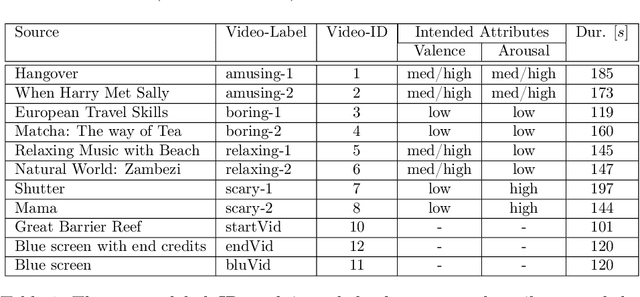
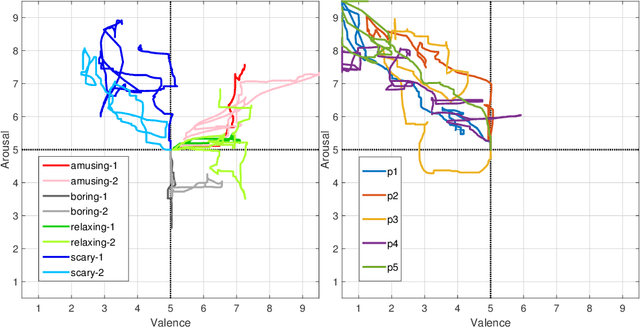

Abstract:From a computational viewpoint, emotions continue to be intriguingly hard to understand. In research, direct, real-time inspection in realistic settings is not possible. Discrete, indirect, post-hoc recordings are therefore the norm. As a result, proper emotion assessment remains a problematic issue. The Continuously Annotated Signals of Emotion (CASE) dataset provides a solution as it focusses on real-time continuous annotation of emotions, as experienced by the participants, while watching various videos. For this purpose, a novel, intuitive joystick-based annotation interface was developed, that allowed for simultaneous reporting of valence and arousal, that are instead often annotated independently. In parallel, eight high quality, synchronized physiological recordings (1000 Hz, 16-bit ADC) were made of ECG, BVP, EMG (3x), GSR (or EDA), respiration and skin temperature. The dataset consists of the physiological and annotation data from 30 participants, 15 male and 15 female, who watched several validated video-stimuli. The validity of the emotion induction, as exemplified by the annotation and physiological data, is also presented.
Automated Image Captioning for Rapid Prototyping and Resource Constrained Environments
Jun 04, 2016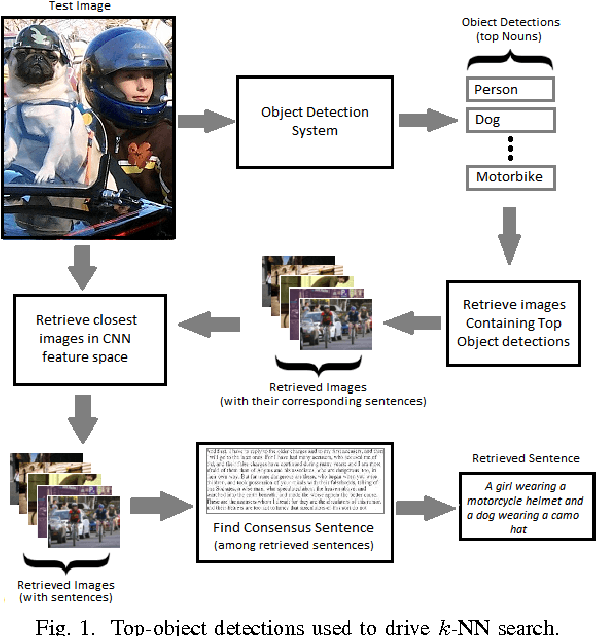
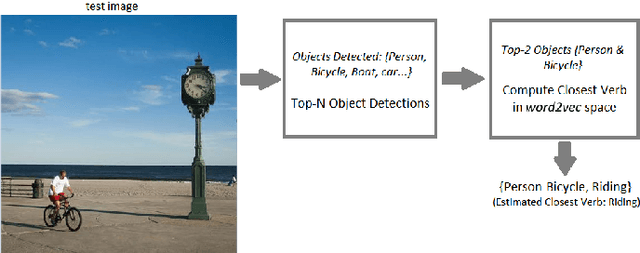
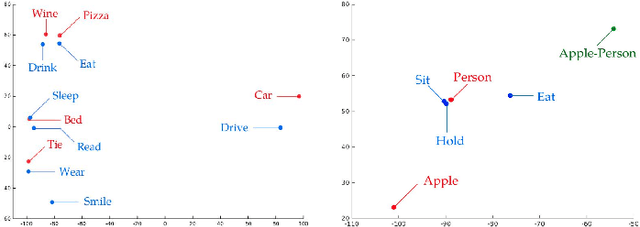

Abstract:Significant performance gains in deep learning coupled with the exponential growth of image and video data on the Internet have resulted in the recent emergence of automated image captioning systems. Ensuring scalability of automated image captioning systems with respect to the ever increasing volume of image and video data is a significant challenge. This paper provides a valuable insight in that the detection of a few significant (top) objects in an image allows one to extract other relevant information such as actions (verbs) in the image. We expect this insight to be useful in the design of scalable image captioning systems. We address two parameters by which the scalability of image captioning systems could be quantified, i.e., the traditional algorithmic time complexity which is important given the resource limitations of the user device and the system development time since the programmers' time is a critical resource constraint in many real-world scenarios. Additionally, we address the issue of how word embeddings could be used to infer the verb (action) from the nouns (objects) in a given image in a zero-shot manner. Our results show that it is possible to attain reasonably good performance on predicting actions and captioning images using our approaches with the added advantage of simplicity of implementation.
 Add to Chrome
Add to Chrome Add to Firefox
Add to Firefox Add to Edge
Add to Edge